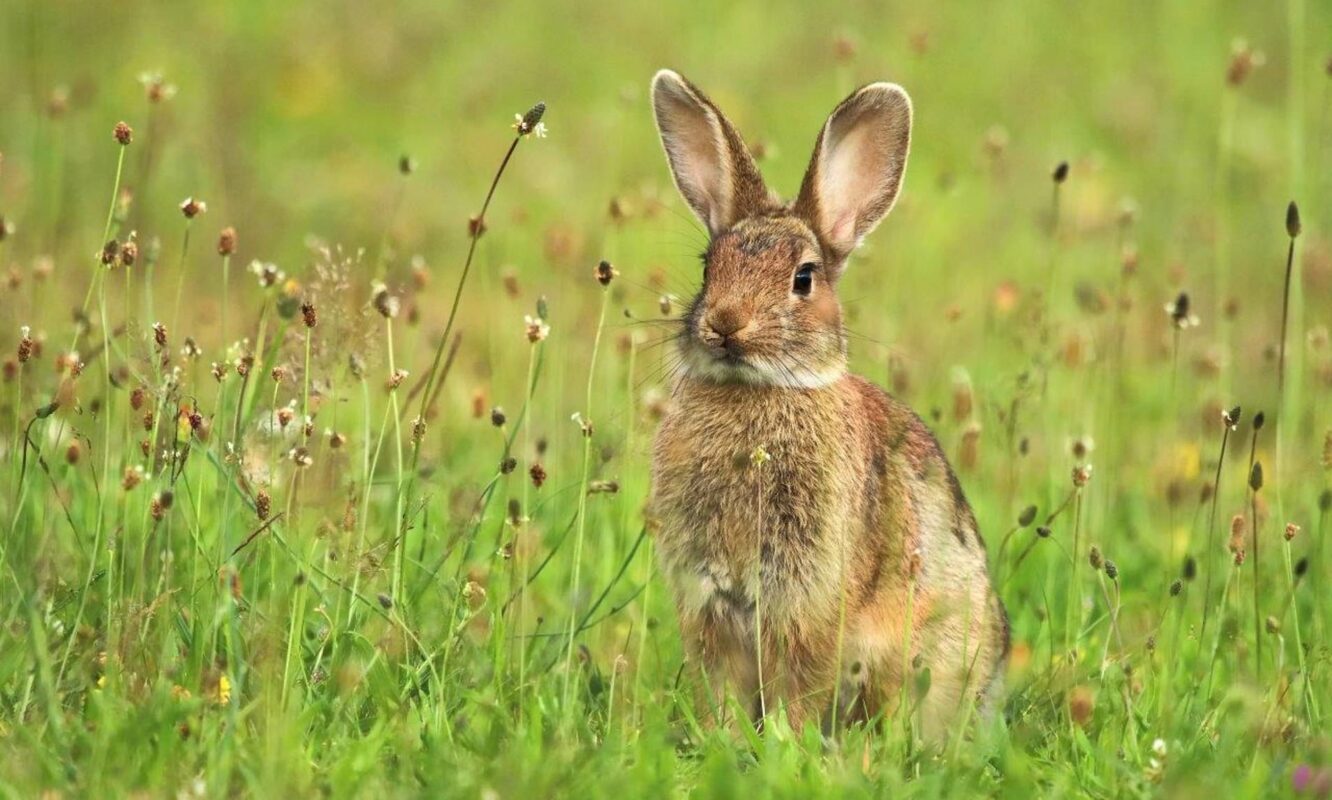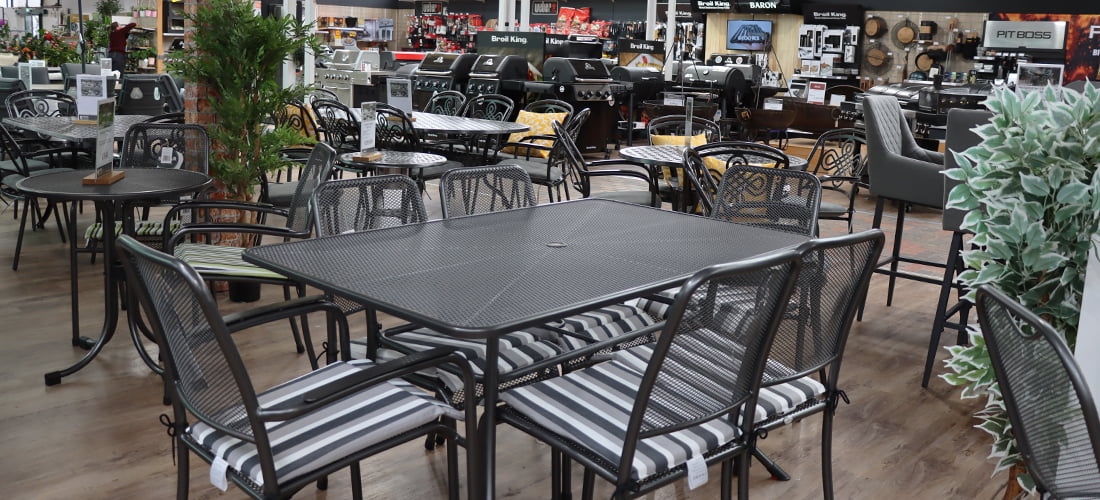RABBITS
Rabbits often live together in colonies and under ideal conditions are prolific breeders. They are a menace in rural and semi-rural gardens, and can cause considerable damage. They feed on a very wide range of ornamental plants, fruits and vegetables. New plantings and soft growth in spring may be eaten, even on plants that are listed as less-susceptible.
Rabbits do most of their feeding between dusk to dawn but can also be active during the day.
SYMPTOMS
- Rabbits or their spherical droppings are usually easy to spot. Symptoms of damage can include:
- Shoots on herbaceous plants grazed to ground level
- Foliage and soft shoots of woody plants can be grazed up to a height of 50cm by rabbits standing up on their hind legs
- Bark may be gnawed away from the base of trunks, especially in winter when snow or frost makes other vegetation unavailable. This can kill trees and shrubs if ringbarked. Partly gnawed trunks should be wrapped in black polythene to encourage the damaged area to callus over
- Holes and scrapes in lawns and flower beds
CONTROL
Fencing and Netting: Rabbits usually enter gardens from adjoining common land, farms or woods. Where this is the case, the erection of rabbit-proof fences and gates should be considered. Ideally fences should be of 2.5cm (1-1¼in) wire mesh and 120-140cm (48-54in) in height. The bottom 30cm (1ft) is sunk below ground level, with the lower 15cm (6in) bent outwards to stop rabbits tunnelling underneath. Gates and other entrances must also be rabbit-proof and kept closed when not in use. Where complete fencing is impracticable, it may be possible to protect small areas, such as kitchen gardens, or particularly susceptible plants, such as lilies, by wire-netting barriers around them. For example individual plants can be protected with netting 90cm (3ft) high, without the need to lay part of the fence in the ground.
Plastic tree guards/spirals (biodegradable spirals based on potato starch are available) or wire netting should be used to protect the trunks of young trees and shrubs.Animal repellents: Repellents suitable for spraying on plants which contain aluminium ammonium sulphate. These have a bitter taste and so is not suitable for edible plants that are close to harvesting. Repellents seldom give complete protection, particularly during wet periods or when plants are making active growth.
Plant choice: In areas where rabbits are particularly troublesome, it is advisable to grow plants that are relatively resistant. There is no guarantee that any of the plants listed as resistant will remain free from damage in all conditions. Recent plantings and soft growth in the spring can sometimes be eaten, even if the plants are not susceptible at other times. Gardeners in rabbit-infested areas may get some additional ideas by seeing what plants survive in neighbouring gardens.
RABBIT RESISTANT PLANTS
TREES
- Alnus (Alder)
- Arbutus (Strawberry Tree)
- Betula (Birch)
- Eucalyptus (Gum Tree)
- Laburnum
CONIFERS
- Araucaria (Monkey Puzzle Tree)
- Cryptomeria
- Pinus nigra (Pine)
CLIMBERS:
- Clematis
- Lonicera (Honeysuckle)
GRASSES & BAMBOOS
- Arundinaria
HERBS:
- Rosmarinus (Rosemary)
- Ruta (Rue)
- Aucuba (Japanese Laurel)
- Azalea
- Berberis (Barberry)
- Buddleja (Butterfly Bush)
- Buxus (Box)
- Ceanothus
- Chimaonanthus (Wintersweet)
- Choisya ternata (Mexican Orange Blossom)
- Cistus (Rock Rose)
- Cornus (Dogwood)
- Cytisus (Broom)
- Daphne
- Deutzia
- Elaeagnus
- Escallonia
- Euonymus europaeus (Spindle Tree)
- Fatsia (Castor Oil Plant)
- Fuchsia
- Gaultheria (Box Berry)
- Hippophae rhamnoides (Sea Buckthorn)
- Hydrangea
- Hypericum (St. John’s Wort)
- Kalmia (Calico Bush)
- Lavatera (Mallow)
- Ligustrum (Privet)
- Olearia haastii (Daisy Bush)
- Paeonia (Peony)
- Philadelphus (Syringa)
- Prunus laurocerasus
- Rhododendron
- Rhus
- Ribes
- Rosa (not hybrid tea rose)
- Ruscus
- Sambucus (Elder)
- Sarcococca (Christmas Box)
- Skimmia
- Symphoricarpus (Snowberry)
- Viburnum (Guelder Rose)
- Vinca (Periwinkle)
- Weigela
- Yucca
- Acanthus (Bears Breeches)
- Agapanthus (African Lily)
- Ajuga (Bugle)
- Alchemilla mollis (Lady’s Mantle)
- Allium
- Alstromeria (Peruvian Lily)
- Anaphalis
- Anchusa (Bugloss)
- Anemone
- Antirrhinum (Snapdragon)
- Aquilegia (Columbine)
- Aster
- Astilbe (False Goatsbeard)
- Bergenia
- Brunnera
- Corydalis
- Crinum
- Crocosmia
- Cyclamen
- Dahlia
- Digitalis (Foxglove)
- Doronicum (Leopards Bane)
- Echinops (Globe thistle)
- Epimedium
- Eranthis (Winter Aconite)
- Eremurus (Foxtail Lily)
- Eryngium (Sea Holly)
- Euphorbia
- Fritillaria
- Galanthus (Snowdrop)
- Gentiana
- Helenium
- Helianthus (Sunflower)
- Heuchera (Coral Flower)
- Helleborus
- Hemerocallis (Day Lily)
- Impatiens (Busy Lizzie)
- Iris
- Kniphofia (Red Hot Poker)
- Linum (Flax)
- Liriope
- Lupin
- Lychnis (Catchfly)
- Lysimachia
- Macleaya
- Malva (Mallow)
- Muscari (Grape Hyacinth)
- Myosotis (Forget-me-not)
- Narcissus (Daffodil)
- Paeonia (Peony)
- Papaver (Poppy)
- Pulmonaria (Lungwort)
- Salvia superba
- Stachys (Lamb’s Ear)
- Tradescantia
- Trollius (Globe Flower)
- Tulip
- Verbascum
- Verbena
- Viola
DEER
Several species of deer, especially roe and muntjac, can visit gardens and can cause severe damage to a wide range of plants. They will strip flowers and foliage and also damage tree bark.
Deer are mammals, usually living in woodland or scrubby areas from where they make forays into gardens. They may visit gardens singly but often it will be several animals that can cause extensive damage.
SYMPTOMS
- Shoots, flower buds and foliage stripped off plants, with the damage often occurring overnight
- Damaged woody stems often have a ragged cut end where a deer has bitten part way through the stem and then tugged the shoot off
- Deer will eat tree bark, mainly in winter when other food is scarce
- Another frequent form of bark damage is fraying. This occurs in summer when male deer rub their heads against the trunks of sapling trees in order to remove the outer skin or velvet from a new set of antlers, or when they are scent-marking their territories. The antlers make vertical cuts in the bark, which peels off and exposes the inner wood. Such damage often causes growth above the point of damage to dry up and die
CONTROL
Fencing and Netting: The most effective way of stopping deer is to exclude them from gardens with netting or fences but these need to be robust and relatively tall. Deer can squeeze through small gaps under fencing or leap over barriers that are too low.
Wire mesh fencing should be 1.5m (5ft) tall for muntjac and 1.8m (6ft) for other deer, and a heavy duty type of wire like that used to fence sheep or pigs should be used in the lower half. The bottom edge should be pegged to the ground to stop deer lifting the wire and squeezing underneath. The maximum mesh size should be 20 x 15cm (8 x 6in) for most deer but 7.5 x 7.5cm (3 x 3in) where muntjac are a problem.
Entrances to the garden need deer-proof gates. An electric fence, as used to confine farm livestock, is often ineffective against deer and may be damaged if deer are startled and try to run through it. Horizontal strands of plain or barbed wire are unlikely to be effective as roe deer can squeeze through gaps of 30cm (1ft).
Hedges can be an effective barrier if they are suitably tall and solid enough to stop deer pushing through. A ditch on the outside will improve the effectiveness of fences or hedging.
Protecting young trees: Tree guards will be necessary to protect young trees from fraying if the garden is not fenced. The best way of doing this is to place three or four stakes or poles around the trunk so that the deer cannot get close enough to damage the bark. Additional protection can be given with wire netting. A height of 120cm (4ft) is adequate for roe deer but taller guards are needed for larger deer such as the red or fallow. The leading shoots of young trees can be protected by twisting sheep’s wool around them. This will need adjustment from time to time during the growing season.
Animal repellents: Animal deterrent sprays based on aluminium ammonium sulphate may discourage deer from feeding but need frequent application in spring and summer to keep pace with new growth. Such sprays may also divert deer onto feeding on other plants that have previously been left alone.
Ultra-sonic scaring devices emit a high pitched sound that is inaudible to humans but loud to animals such as deer. These devices can be effective initially but the deterrent effect is likely to be reduced once deer have become familiar with the noise. These will also bother other animals and pets in close proximity.
Deer keep well away from dogs, so the scent and sound of a dog in the garden may be helpful.
DEER RESISTANT PLANTS
- Bamboos
- Berberis
- Buddleja
- Buxus
- Choisya
- Clematis
- Cornus
- Daphne
- Forsythia
- Gooseberries
- Hydrangea
- Lonicera
- Magnolia
- Mahonia
- Potentilla fruticosa
- Rhododendron
- Rosa rugosa
- Spiraea
- Viburnum








